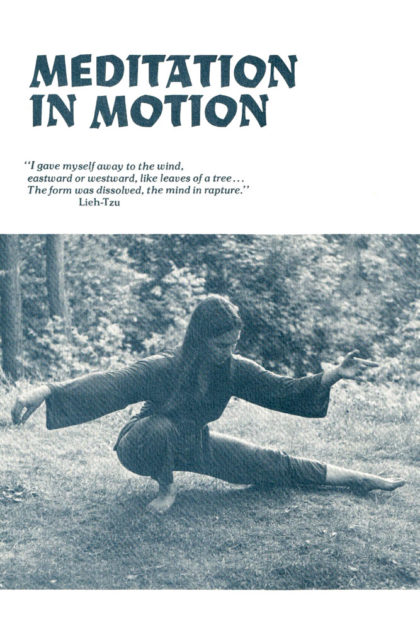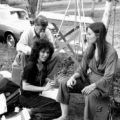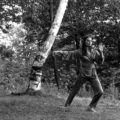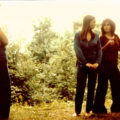Meditation in Motion
I gave myself away to the wind,
eastward and westward, like leaves of a tree…
The form was dissolved, the mind in rapture.— Lao Tzu
A solitary figure clad in dusky blue begins to move. Arising from stillness, the movement flow in a slow continuous cycle — sinking, rising, pushing out, pulling back, turning. Almost imperceptibly, the viewer is drawn into the motion. When the cycle is completed, the figure pauses a moment — then picks up a sweater and disappears down the path.
Meditation in Motion is a short lyrical film that introduces its audience to an ancient Chinese discipline — Tai Chi. Some 4,000 years ago, Emperor Yu ordered that a series of exercises called the Great Dances be performed to build fitness and health among the people. He felt that I stagnant waters become diseased, the same is true of inactive bodies. In the following centuries, many forms of exercise emerged. By the 15th century, Tai Chi Ch’uan had evolved as a unified system of exercise and meditation.
The film moves from the streets of China, where millions turn out daily to observe the centuries-old tradition, to a clearing in a North American city park. Far from its original setting, we see Tai Chi embraced and practiced in the West. Here, as in China, we are searching for a measure o balance and tranquility in our lives. Tai Chi is a coherent vision that offers calm in the midst of change and stress.
Meditation in Motion enfolds the audience in a moment of quiet. It refreshes, delights, and frees the spirit.






